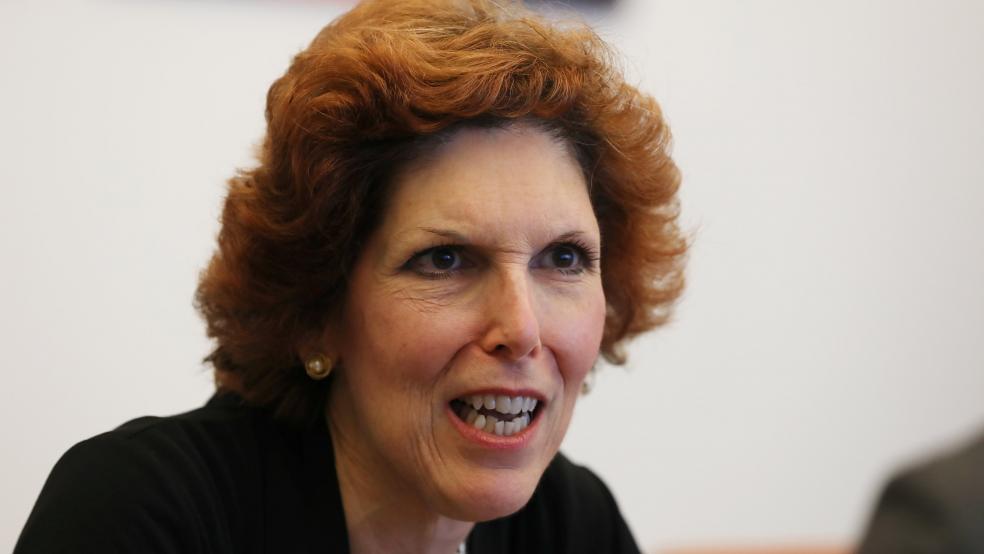NEW YORK (Reuters) - A Federal Reserve policymaker on Wednesday staked out the hawkish argument for carrying on with U.S. interest rate hikes even while weak recent inflation readings have split opinions among her colleagues at the U.S. central bank.
In an interview, Cleveland Fed President Loretta Mester said that while some price readings have fallen this year, expectations are more stable, adding that monetary policy must anticipate changes in the data and not react to temporary aberrations. She said there is roughly an equal chance that the Fed is forced to raise rates more or less aggressively than currently planned in the months and years ahead. "I am not there yet. I still think we need to start bringing back some of the accommodation," by raising rates and pressing forward with plans to reduce the size of the Fed's asset holdings, Mester, who is toward the central bank's hawkish wing, told Reuters.Risks to the Fed's current median forecast of one more rate hike this year and three next year "are balanced," she added, as businesses weigh an improving global economy against uncertainty over the policies of President Donald Trump's administration."We have to be cognizant of the fact that the Fed has to move before we get to both of our goals... I'm not one who would like to see inflation be at 2 percent before we continue on the path," of higher rates, she said.The Fed has tightened policy twice this year in what it hopes will be a steady move to lift short term-interest rates from the super-low levels set to battle the 2007-2009 financial crisis and recession.But a slip in the Fed's preferred inflation reading to 1.5 percent, below a 2-percent goal, has raised concerns that the economy is weaker than it appears. Minutes of the Fed's July meeting, published on Wednesday, showed a split among officials who want to wait and those ready to move ahead with a rate hike perhaps in December.Financial markets, where bond yields are depressed and where stock indexes have logged a series of record highs, give about a 40 percent chance to the Fed raising rates before year end.Addressing the market moves, Mester said she was watching for signs of financial instability. "I expect the long bond rate to go up as we continue on this strategy of gradually removing accommodation," she said, adding that company earnings and low policy rates are likely behind "stock prices being so high."She spoke just as two of the Trump administration's high-level business panels collapsed over the president's comments about a violent rally in Charlottesville, Virginia last weekend. Mester said she did not see the uncertainty surrounding the administration yet feeding through to the economic growth outlook. Among business contacts in her Cleveland district, "there has been a little softening of sentiment and that is one of the things we have to watch for - whether that uncertainty is going to feed through," she said. "At this point it does not look like it."Turning finally to the Fed's well-telegraphed plans to begin shedding bonds in its $4.5-trillion portfolio, Mester said the strategy is to make sure the public and investors are "very prepared." There will likely be a gap between the Fed announcing the start date and the actual beginning of shedding bonds. (Reporting by Howard Schneider and Jonathan Spicer; Editing by Chizu Nomiyama)Fed, split by inflation, should forge on with rate hikes: Mester

SHANNON STAPLETON



